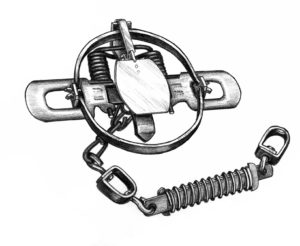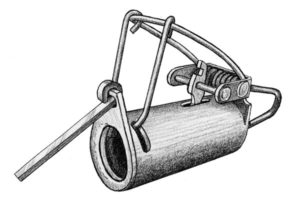Share this article
WM: Long-term trapping study reveals best practices
A multi-decade study on wildlife traps has revealed the most humane, efficient, focused and safe practices for a number of different species trapped for fur, wildlife management purposes or research.
“Trapping is very important to wildlife species in terms of managing,” said Bryant White, program manager of trapping policy for the Association of Fish and Wildlife Agencies and the lead author of the study published recently in Wildlife Monographs.
The study is the result of an effort to bring North American trapping practices in line with European standards on humane wildlife management starting in the early 1990s. At the time, the European Union was threatening a blanket ban on fur product exports coming from the U.S. due to disagreements on whether foothold traps, which catch animals by their feet and restrain them, were humane.
If the U.S. did ban these types of traps, it would have not only impacted the fur trade, but if authorities in the U.S. and Canada heeded the ban, it would also have affected wildlife managers and researchers who rely on using traps for translocation, monitoring, wildlife disease tracking and a host of other impacts.
For-profit furbearer trapping may be controversial, but it is also useful for wildlife managers trying to control certain wildlife populations. Researchers also heavily rely on commercial or recreational trappers to provide them with tissue or blood samples, which can help them track population health, the spread of disease and more.
“There’s a lot of data that agencies get from carcasses that trappers provide them,” White said. “The trapper has one motivation. The agency has another motivation.”
In a large-scale, long-term study, researchers set out to determine how humane different traps were, as well as to examine other factors like efficiency, safety for humans, quality, and how well the traps were at targeting certain species and excluding bycatch, or unintended species.
The researchers tested different traps by shadowing professional trappers for decades. In all, they conducted about 700 different studies across 41 different field sites and tested traps on 23 different species.
Some of the most common trapped wildlife include muskrats (Ondatra zibethicus), beavers (Castor canadensis), raccoons (Procyon lotor), red foxes (Vulpes vulpes), and coyotes (Canis latrans), though there were also regional differences. Bobcats (Lynx rufus) were more commonly trapped in the West, for example.
In examining the trap types commonly used on these species, researchers made a number of discoveries that they then used to update regulations.

A standard coiled spring foothold trap. Courtesy Bryant White
“For every species out there, there are multiple trap types that can be used to capture them humanely based on international standards,” White said.
For raccoons, for example, the most commonly used trap in the 1990s was a coiled spring trap. But the researchers found that these traps didn’t meet humane standards for these animals, since they sometimes chew into their own foot in an effort to free themselves. Instead, the researchers found a way to stop the animals from being able to bite their own legs once they were caught by putting a different type of jaw on the trap and using a cylinder. The raccoons now have to reach their foot into a long, protective metal cylinder to reach the bait, which traps them at the bottom and encases their whole leg.

A foot encapsulating trap now used for raccoons. Courtesy Bryan White
“Now, that is the most commonly used traps used by trappers in the U.S.,” White said about the new version.
They also updated trapper education on lethal traps to ensure the traps would kill animals quickly to prevent undue suffering, based on tests carried out in laboratories in Canada.
The authors of the paper said that these updates will help ensure best practices when it comes to trap use. These rules and guidance will also be periodically updated as new technologies become available, and new research is conducted.
This article features research that was published in a TWS peer-reviewed journal. Individual online access to all TWS journal articles is a benefit of membership. Join TWS now to read the latest in wildlife research.
Header Image:
A recent study helped determine best management practices for using traps for species like raccoons.
Credit: ZeMoufette








